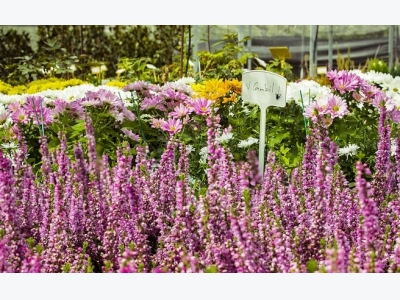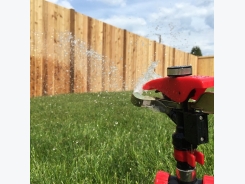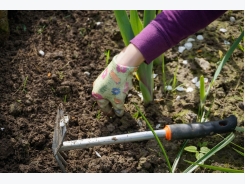Revitalizing Cheap Plants

Do you remember the kid back in grade school who would buy sickly goldfish at the pet store, take them home and nurse them back to health and then sell them back a few months later when they'd tripled in size?
The goldfish were literally pennies to buy when sick and somehow this kid knew what to do to help them get well again and then thrive.
Well, gardeners can do the same with plants! You can buy garden plants at steep discounts if you choose the ones that are showing signs of sickness or weakness. End-of-season plants that are nearing death due to the weather change can also be fair game.
Revitalizing those plants can mean saving a lot of money.
What To Look For When Buying Cheap Plants
The hardest part in choosing sickly plants to nurse back to wellness is to make sure you're picking the ones that actually have a chance of being saved. If any good greenery or roots are on the plant, you can probably nurse it back to health. If the roots are badly damaged or infected, then you're probably better off moving on to the next plant. Healthy roots are firm and white, while damaged roots look black and squishy.
Look for plants with yellowing or drooping leaves, but not turning brown or dropping off. These likely just need a little TLC to be brought back. Also look for drooping plants that are obviously too large for their containers. These may only need to be transplanted and watered regularly to recover. Plants infested with bugs may be salvageable, but it's generally not advisable to try to clean up a plant that has a fungal or viral infection.
Once you identify "troubled" plants that have potential, ask to speak to the manager about a discount, if they aren't already on sale.
Bringing Plants Back to Life
Once you've got the plant home, do some research on that variety so that you understand its optimal conditions for light, soil and temperature. It's best to quarantine the plant to avoid spreading pests or diseases to your other plants.
If the plant is too big for its pot or is droopy but not browning or turning yellow, then transplanting is the quickest fix. Move the plant to a pot about 2 inches larger than its current pot and water it frequently. Avoid disturbing the roots too much during transplant. Also, try not to abruptly change the environmental conditions the plant was used to at the nursery. Going suddenly from shade to direct sunlight, for instance, is likely to shock the plant and make things worse.
If the plant is showing signs of severe ill health (browning leaves, dead stems, etc) then add fertilizer to the soil in small amounts, water regularly, and trim back the worst of the dead foliage. Aim to trim in thirds, first cutting back about 1/3 of the affected foliage. If it doesn't begin clearing up or if it still shows signs of decaying health a week or so later, trim back another 1/3. Once you find living stems or trunks, stop trimming. With many varieties of plants, you can cut them all the way back to about an inch or so above the soil and still have a viable plant that can recover.
If the plant shows signs of insect infestation, do some research to identify the bugs and use the recommended methods to alleviate the infestation.
The first rule of thumb is not to get overzealous with fertilizer thinking that's all the problem is. Likely it's not. Try aerating the soil, adding water, and trimming back sickly parts.
End-of-Season Plants
At the end of the garden season, plants are often sold at steep discount, as the nursery wants to get rid of remaining stock and make room for new items. So you can get these plants for pennies on the dollar.
Most perennial plants can be over-wintered. So you can take the plant and prepare it for winter hibernation and then plant it in the spring. Or, you can let it go to seed and gather those for next year's plantings. Either way, you come out ahead.
How to Split Bargain Plants
Once you have nursed a bargain plant back to health, some varieties can be split to make more plants. The best way to split a healthy plant is to choose a fork in the trunk or central stalk and cut away at an angle, removing roughly half the plant. Place this immediately in clean water and let it soak. Adding "rooting" nutrients (available in most garden stores) or a few drops of compost tea to encourage new growth. Most of this growth will be in making new roots from the cut. In a couple of weeks, it can be planted in soil and grown like any other plant!
Có thể bạn quan tâm
Phần mềm

Phối trộn thức ăn chăn nuôi

Pha dung dịch thủy canh

Định mức cho tôm ăn

Phối trộn phân bón NPK

Xác định tỷ lệ tôm sống

Chuyển đổi đơn vị phân bón

Xác định công suất sục khí

Chuyển đổi đơn vị tôm

Tính diện tích nhà kính

Tính thể tích ao hồ



 Simple Garden Fences
Simple Garden Fences  Parts of a Flower
Parts of a Flower